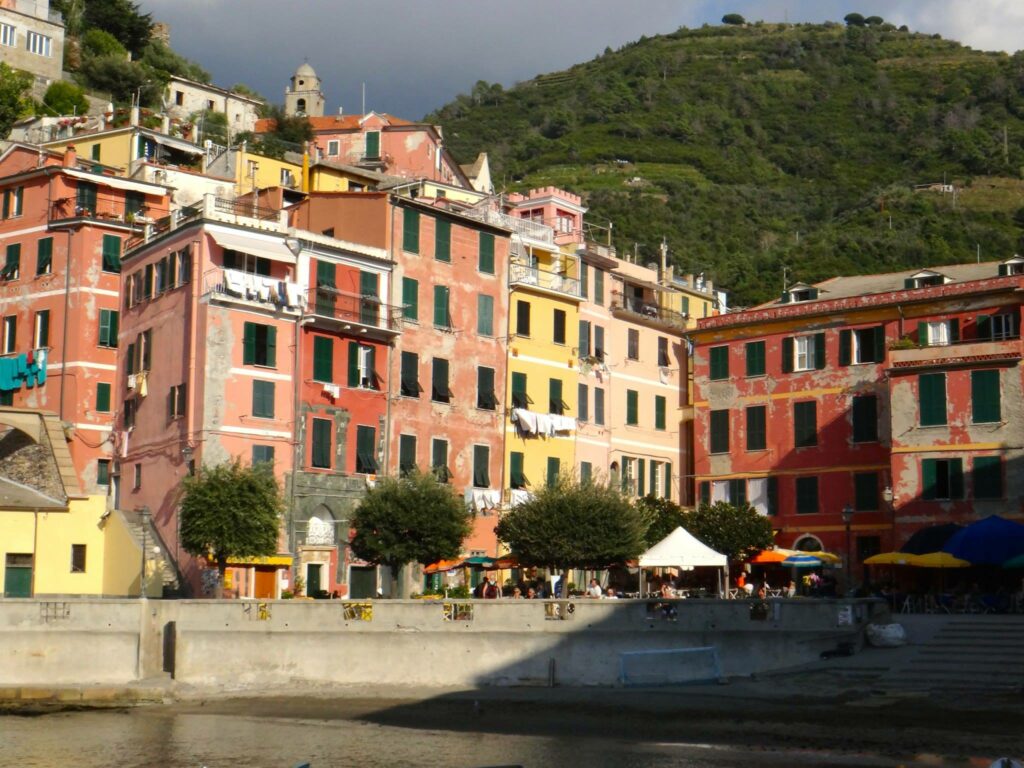The central Italian region of Tuscany is famed for its breath taking scenery, extensive history, charming villages, and delectable cuisine. Every year, countless tourists travel to Tuscany to take in its quaint mediaeval villages, rolling hills covered in vineyards and olive groves, and some of the country’s most famous works of art and architecture.
The city of Florence, which has some of the most renowned art museums and galleries in the world, including the Uffizi Gallery and the Accademia Gallery, which holds Michelangelo’s David statue, is one of the most visited destinations in Tuscany. Other well-liked locations in Tuscany are the lovely hilltop town of San Gimignano, the mediaeval cities of Siena and Pisa, and the gorgeous Val d’Orcia region, which is a UNESCO World Heritage site.
Tuscany’s delectable food, which is famous for its straightforward yet savory meals like pasta with fresh tomatoes and basil, bistecca alla fiorentina (a grilled T-bone steak), and of course, Chianti wine, is available to tourists as well. A trip to this region is likely to be one to remember, whether you are interested in history, art, gastronomy, or just taking in the beauty of the Tuscan countryside. In this article, we will explore why Tuscany is so popular and what makes it such a unique and desirable destination.
Beautiful Landscapes in Tuscany
Tuscany’s sceneries, an endless canvas of undulating hills, vineyards, cypress-lined roads, and ancient villages, are a marvel of nature’s workmanship. Here are a few of this fascinating region’s most alluring qualities:
Rolling Hills: Tuscany is well-known for its mildly sloping hills that are blanketed with olive and grape groves. As the seasons change, these hills produce a captivating pattern of colors.
Vineyards: The area is well known for its vineyards, which produce Chianti and other globally recognized wines. It is impressive to see the tidy rows of grapevines reaching the horizon.
Cypress Trees: The region’s roads and drives are bordered by iconic cypress trees, which provide the area a vertical grandeur.
Sunflower Fields: During the summer months, enormous fields of sunflowers bloom, transforming Tuscany into a picture-perfect scene with their vivid golden faces.
Enchanting Villages: Tuscany is full of quaint towns where mediaeval architecture melds perfectly with the natural surroundings, such as San Gimignano and Montepulciano.
Olive Groves: The region is covered in silvery olive groves that yield some of the best olive oil in the world.
Beautiful Drives: Some of the world’s most picturesque drives may be found along the meandering roads that snake through the Val d’Orcia and the Chianti wine region.
Travelers, poets, and artists can all find inspiration in Tuscany’s landscape. Its timeless beauty captivates the hearts of everyone who has the honor of witnessing it.
2. Historic Cities in Tuscany
Tuscany is home to a multitude of ancient cities, each with its own distinct personality and an abundance of artwork, architectural design, and cultural practices. These few of the historical cities that take you back in time that you really must see:
Florence: Known as the birthplace of the Renaissance, Florence is a dynamic art and historical museum. Among the most famous sites in the city are the Ponte Vecchio, the Uffizi Gallery, and the Florence Cathedral.
Siena: Known for its gorgeous Piazza del Campo and its mediaeval alleyways, Siena is a Gothic architectural marvel. One of the UNESCO World Heritage sites is the historic center.
Pisa: Known for the Leaning Tower of Pisa, this city has a rich maritime history in addition to a variety of old churches and palaces.
Lucca: The old center of Lucca has been well conserved and is surrounded by Renaissance walls. The city bears evidence of its mediaeval and Roman origins.
The walled town of San Gimignano, sometimes called the “Mediaeval Manhattan” because of its recognizable towers, offers a window into mediaeval Tuscany.
Arezzo: Steeped in Etruscan and Renaissance history, Arezzo boasts a stunning Piazza Grande and a Roman amphitheater.
Volterra: An Etruscan city renowned for its intact Roman ruins and walls.
Cortona: Known for its Etruscan roots, this hill town has expansive views of Lake Trasimeno and the Valdichiana.
Pistoia is a city known for its rich cultural legacy and quaint mediaeval center.
Every one of these Tuscan mediaeval cities has a distinct charm and historical significance of its own. It’s like travelling back in time to explore their cobblestone alleys, take in their stunning centuries-old buildings, and learn about their rich creative and cultural legacy.
3. Gastronomy in Tuscany
The central Italian region of Tuscany is well known for its cuisine, which is based on a great respect for high-quality, fresh ingredients and tradition. Below is a sample of some of Tuscany’s culinary delights:
Tuscan cuisine is renowned for its rustic charm and simplicity. Fresh vegetables, aromatic herbs, fine olive oil, and freshly baked bread are staples. Recipes such as pappa al pomodoro (a tomato and bread soup) and ribollita (a hearty vegetable and bread soup) highlight the area’s economical yet tasty cooking style.
World-Class Olive Oil: Tuscany is well-known for producing some of the best olive oils in the world. The majority of Tuscan recipes call for extra-virgin olive oil, which is also liberally drizzled over bruschetta, salads, and other foods.
Wines of Tuscany: If you love wine, this region is heaven. Famous wines like Chianti, Brunello di Montalcino, and Vernaccia di San Gimignano are born there. Wine tastings and tours are set against the magnificent backdrop of the undulating vineyards.
Cured Meats: Prosciutto, finocchiona (a salami flavored with fennel seeds), and lardo di Colonnata (cured hog fat) are among the delectable treats found in Tuscan charcuterie.
Pasta with Beans: A specialty of Tuscany is pasta combined with beans. Pasta e fagioli is a meal that goes well with pici, a thick, hand-rolled pasta.
Bistecca alla Fiorentina: The thick-cut, perfectly cooked T-bone steak that is the specialty of Tuscany is known as the Florentine steak. It’s a feast for meat eaters.
Porcini and truffles: Tuscany is a great place to find porcini mushrooms, which are used in a variety of recipes, and to hunt truffles.
The cuisine of Tuscany is a celebration of the rural heritage of the area, emphasizing real, locally produced foods cooked with love and tradition. It is the real deal when it comes to Italian food.
4. Cultural Heritage in Tuscany
The cultural center of Italy, Tuscany, is a treasure trove of extraordinary history that endures. Travelers and admirers of human achievement will find it to be an enticing destination because of the way that art, history, and tradition are interwoven into its rich cultural fabric.
Renaissance splendor: The Renaissance, a pivotal era in human history, was born in Tuscany, especially in Florence. Unmatched masterpieces were left behind by the rise of famous artists like Michelangelo and Leonardo da Vinci during this time.
Architectural Icons: The inventiveness of Tuscan architecture is seen in the cities. Beautiful mediaeval cities like Siena and San Gimignano exhibit centuries’ worth of historical and artistic influences, while the Florence Cathedral, Piazza del Duomo, and the Leaning Tower of Pisa stand as architectural wonders.
Culinary Excellence: An essential component of Tuscan culture is its cuisine, which is renowned for its fresh, local ingredients and simplicity. Every plate of traditional foods like bistecca alla Fiorentina, pappa al pomodoro, and ribollita offers a glimpse of the past.
Etruscan Legacy: The Etruscans flourished in Tuscany before the Romans arrived, and the area is dotted with old tombs and archaeological sites that bear witness to their civilization.
Literary Legends: Tuscany’s sceneries served as a source of inspiration for renowned authors like Dante Alighieri and Petrarch, contributing to the region’s rich cultural heritage.
The cultural legacy of Tuscany is a dynamic, alluring fusion of historical significance, architectural magnificence, gastronomic mastery, and creative brilliance. It invites everyone who comes to immerse himself or herself in an inspirational and timeless trip through the accomplishment of humankind.
5. Wine Tourism in Tuscany
One of the most well-known wine-producing regions in the world is Tuscany, which is renowned for its premium wines like Chianti, Brunello di Montalcino, and Vino Nobile di Montepulciano. There are numerous vineyards and wineries in the area, each with its own special charm and background.
A wine tour is among the greatest ways to discover Tuscany’s wineries. Many wineries give guests guided tours of their vineyards and wine cellars so they can learn more about the winemaking process and the winery’s history. These excursions frequently include wine tastings that give visitors the chance to sample some of the greatest wines produced in the area and learn more about the peculiarities of each vintage.
Tuscany offers a wide variety of wineries, from modest family-run operations to enormous industrial vineyards. Among the most well-known wineries in the area are:
Antinori Winery
In the centre of Tuscany’s Chianti Classico region is the famed Antinori Winery. With a history spanning more than 600 years, Antinori is recognised for adopting cutting-edge methods to produce fine wines. Visitors can explore the vineyards and discover more about the winemaking process by taking advantage of the winery’s tours and tastings. The winery’s gorgeous edifice, created by architect Marco Casamonti, merges in beautifully with the surroundings, adding to its appeal. Any wine aficionado visiting Tuscany must pay a visit to the Antinori Winery, which offers a wide selection of wines to sample and a restaurant serving delectable Tuscan cuisine.
2. Banfi Winery
In the centre of Tuscany’s Chianti Classico area, the renowned Antinori Winery can be found. With a more than 600-year history, Antinori is recognised for adopting cutting-edge methods to create fine wines. Visitors can explore the vineyards and discover how wine is made at the winery, which offers tours and tastings. Another appealing feature of the vineyard is its gorgeous building, which architect Marco Casamonti created to blend perfectly with the natural surroundings. A stop at the Antinori Winery is a must for any wine fan travelling to Tuscany, offering a vast selection of wines to sample and a restaurant serving delectable Tuscan cuisine.
3. Castello di Volpaia
Near the centre of Tuscany’s Chianti area, near the town of Volpaia, sits the lovely winery known as Castello di Volpaia. The winery, which is set in a lovely castle with breath taking views of the surrounding hills and vineyards, dates back to the 11th century. The winery uses conventional winemaking techniques to create a variety of premium wines, including Chianti Classico, Sangiovese, and Merlot. Visitors are welcome to tour the winery and the historic cellars of the castle, where the wines are matured in oak barrels. Visitors can also partake in tastings where they can taste a variety of Castello di Volpaia’s wines.
4. Castello Banfi
A notable winery called Castello Banfi is located in Tuscany’s Montalcino region. The vines of the winery cover more than 7,000 acres, and they yield some of the best wines in the area, including the acclaimed Brunello di Montalcino. Castello Banfi offers guided tours of the winery and its vines, as well as wine samples for guests. In addition, the vineyard has a restaurant where visitors may enjoy authentic Tuscan fare coupled with Castello Banfi’s wines. The estate also provides upscale lodging alternatives, including castle-specific rooms and suites as well as attractive villas and flats spread out around the property.
6. Outdoor Activities in Tuscany
Outdoor enthusiasts find refuge in Tuscany’s mild climate and stunning surroundings. Tuscany provides a wide range of opportunities to discover its natural beauty, whether you are looking for thrilling activities or peaceful getaways:
Trekking and hiking: Tuscany’s undulating hills, filled with olive orchards and vineyards, are perfect for trekking. Routes such as the Via Francigena and the Monti del Chianti provide picturesque views and a close-knit relationship with the surrounding landscape.
Cycling: Cycling enthusiasts will find bliss in Tuscany’s meandering roads and gorgeous countryside. You can ride a bike through quaint towns and historical landmarks, or you can go mountain riding in the Apennine Mountains.
Riding a Horse: See Tuscany from a different angle while riding a horse. One of the most distinctive ways to experience the natural splendor of the area is via horseback riding through vineyards, forests, and along the shore.
Wine Tours: Mix viticulture with outdoor fun. Take a bike ride or on foot through Tuscany’s well-known wine districts, stopping along the way for tastings at wineries.
Golf: Tuscany offers a relaxing outdoor experience with its top-notch golf courses set against breathtaking scenery.
Beaches: Along the Mediterranean Sea, the Tuscan coast is home to stunning beaches where visitors may enjoy water sports, swimming, and tanning.
Rock Climbing and Caving: Climbers can discover places to go underground in Tuscany’s Apuan Alps and explore cave systems.
Nature lovers, athletes, and those looking for leisure can all find their ideal outdoor adventure thanks to Tuscany’s varied landscapes, which provide a variety of outdoor activities.
7. Relaxation in Tuscany
Not only is Tuscany a great place for adventurous travel, but it is also a great place to unwind and refresh. Here’s how to relax amid the breath-taking natural and cultural surroundings of Tuscany:
Thermal Baths: There are numerous natural thermal baths and hot springs across Tuscany. Allow the relaxing thermal qualities of Saturnia or Bagno Vignoni to envelop you in their healing waters, releasing any tension and stress.
Villa Retreats: The landscape of Tuscany is peppered with quaint villas and agriturismi that provide a calm and seclusion for unwinding. Savor slow walks among vineyards, curl up with a nice book, or just take in the peace and quiet of your surroundings.
Spa Escapes: Tuscany is home to several top-notch spa resorts where you can treat yourself to wellness procedures, massages, and facials—often while taking in breath-taking views of the surrounding countryside.
Wine and Food: Savor well-known wines with relaxed lunches at quaint Tuscan trattorias. A romantic setting with a delicious supper is the perfect way to relax.
Appreciating Art: The cultural heritage of Tuscany can be peaceful. Explore top-notch galleries and museums, or just take in the frescoes in venerable churches, to let art take you back in time.
Yoga and meditation retreats: Several centers in Tuscany provide tranquil environments for you to harmonize your body and mind.
Beachside Bliss: The coastline of Tuscany is home to tranquil beaches where you may unwind, soak up the sun, and hear the soft sound of the waves from the Mediterranean.
The tranquil scenery, calming hot springs, and rich cultural heritage of Tuscany provide the ideal setting for unwinding. It’s a location to discover peace among beauty and to enjoy a slower pace of life.
8. Accessibility of Tuscany
With its gently sloping terrain, ancient cities, and picturesque countryside, Tuscany provides a singular experience for all visitors, including those with a range of mobility requirements. An outline of Tuscany’s accessibility is provided below:
Accessible Accommodations: Widening doorways, roll-in showers, and ramps are just a few of the amenities that many Tuscan hotels, resorts, and agriturismi provide in their accessible rooms and services.
Historic monuments: The antiquity and architectural design of some Tuscan historic monuments may provide difficulties, but others—such as the Leaning Tower of Pisa, the Florence Cathedral, and Piazza del Duomo—offer accessible facilities and entrances.
Transportation: Major cities like Florence have wheelchair-accessible public transportation, and wheelchairs are generally welcome on Tuscany’s train and bus services. Many rental car companies also offer automobiles that are modified.
Accessible Tours: Tuscany provides guided tours tailored to those with limited mobility, so you can easily discover the natural and cultural highlights of the area.
Beaches: Those with mobility issues can enjoy Tuscany’s accessible beaches, which feature boardwalks, beach wheelchairs, and accessible amenities.
Accessible Wineries: A few Tuscan wineries offer accessible wine tasting rooms and cellars.
Over time, Tuscany’s dedication to accessibility has grown, making the region more welcoming to all visitors. Many efforts have been taken to ensure that visitors with varied mobility needs can enjoy the charm and beauty of the region, even though there may be obstacles in older, historic sites.
In conclusion, a number of elements, including Tuscany’s stunning landscapes, historic cities, gastronomy, cultural heritage, wine tourism, outdoor activities, leisure, and accessibility, can be linked to the region’s attractiveness. These components work together to make Tuscany stand out as a special and alluring tourism destination.















